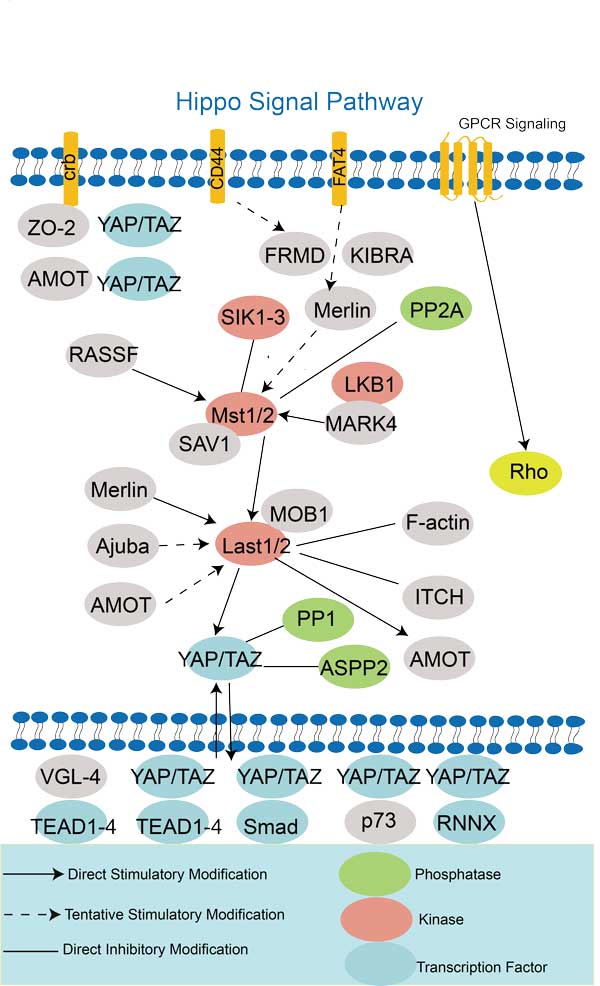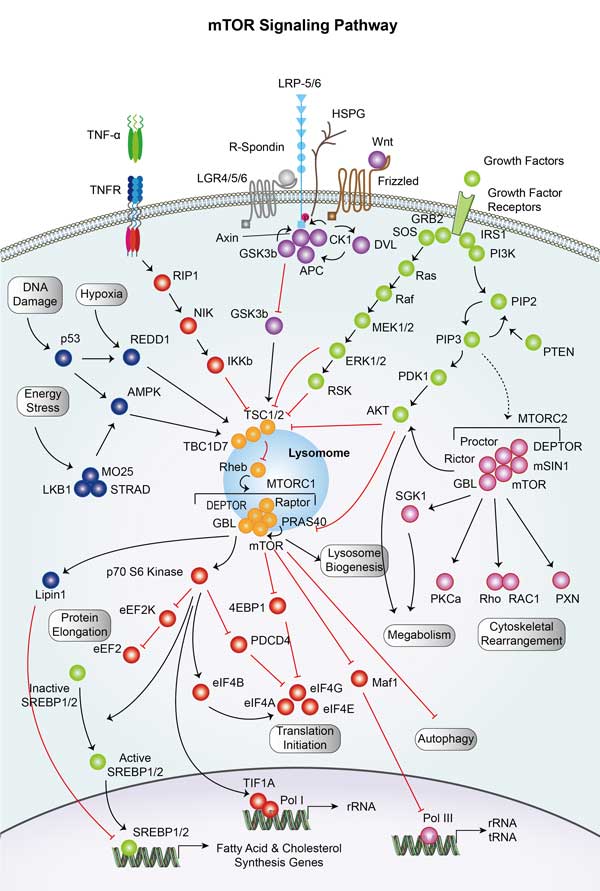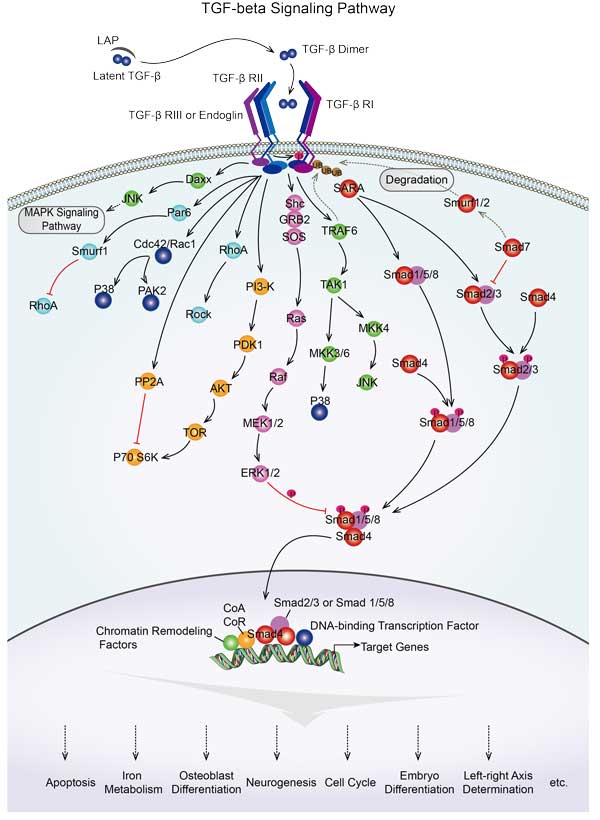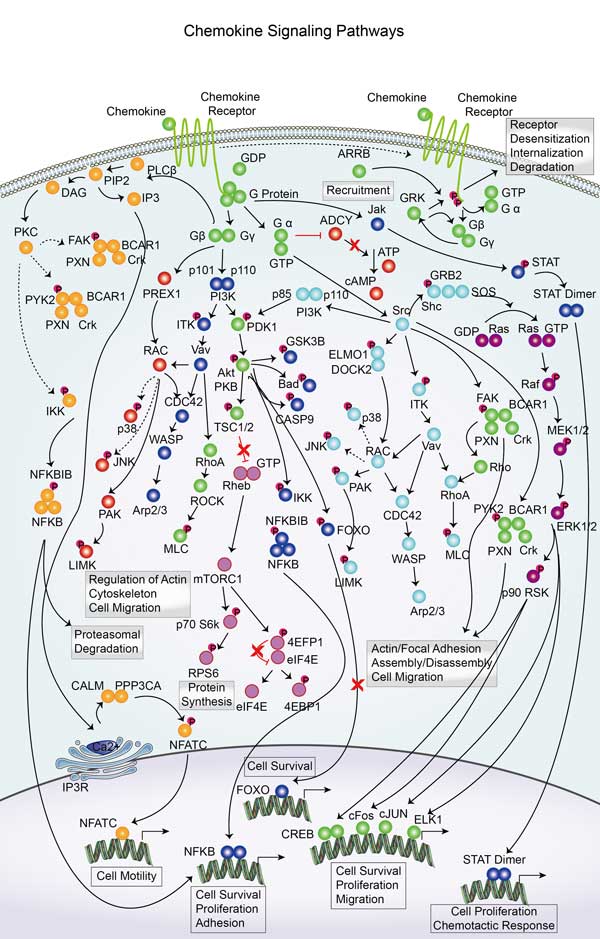RHOA
-
Official Full Name
ras homolog family member A
-
Overview
Ras is the name given to a family of related proteins which is ubiquitously expressed in all cells, . All Ras protein family members belong to a class of protein called small GTPase, and are involved in transmitting signals within cells (cellular signal transduction). Ras is the prototypical member of the Ras superfamily of proteins, which are all related in 3D structure and regulate diverse cell behaviours. -
Synonyms
RHOA; ras homolog family member A; ARH12, ARHA, ras homolog gene family, member A; transforming protein RhoA; Rho12; RhoA; RHOH12; h12; oncogene RHO H12; rho cDNA clone 12; Aplysia ras-related homolog 12; small GTP binding protein RhoA; ras homolog gene;
- Recombinant Proteins
- Cell & Tissue Lysates
- Protein Pre-coupled Magnetic Beads
- Assay Kits
- Chicken
- Human
- Mouse
- Rat
- E.coli
- HEK293
- HEK293T
- Insect Cell
- Insect Cells
- Mammalian Cell
- Mammalian cells
- C
- Myc
- DDK
- Flag
- GST
- His
- His (Fc)
- Avi
- MYC
- Myc|DDK
- N/A
- N
- Involved Pathway
- Protein Function
- Interacting Protein
- Other Resource
- RHOA Related Signal Pathway
RHOA involved in several pathways and played different roles in them. We selected most pathways RHOA participated on our site, such as Ras signaling pathway, Rap signaling pathway, cGMP-PKG signaling pathway, which may be useful for your reference. Also, other proteins which involved in the same pathway with RHOA were listed below. Creative BioMart supplied nearly all the proteins listed, you can search them on our site.
| Pathway Name | Pathway Related Protein |
|---|---|
| Ras signaling pathway | GNG2;PLD2;BRAP;GRIN1;RALGDS;RASSF1;FGF14;PLA2G12A;NRAS |
| Rap signaling pathway | GNAS;FGF3;RAPGEF1;PDGFRA;PFN3;ACTG1;FPR1;BRAF;FGF18 |
| cGMP-PKG signaling pathway | VDAC3;CREB3L2;NPR1;NFATC2;SLC25A4;ITPR3;BDKRB2;ATP1B2;CREB3L3 |
| cAMP signaling pathway | ATP1A4;CALML3;ACOX3;CREB5;HTR4;EP300;GABBR1;GRIN1;FOS |
| Chemokine signaling pathway | PREX1;Ccl21c;CCL21B;Ccl21a;PF4V1;ITK;CCL24;SRC;XCR1 |
| Sphingolipid signaling pathway | GNAQ;MAPK1;S1PR5;PRKCZ;SPTLC3;SPTLC2;PPP2R5B;DEGS1;SPHK2 |
| Phospholipase D signaling pathway | GRM7;PIK3CG;DNM3;MAP2K2;PIK3CB;Adcy4;PIK3R2;PLCB2;GRM4 |
| Endocytosis | ZFYVE20;TGFBR2;ACAP3B;MET;HLA-C;IL2RB;NEDD4L;BC2;KIF5AA |
| Vascular smooth muscle contraction | PLA2G2F;CALML3;MAP2K2A;RHOAD;PLA2G4A;PTGIR;PRKCQ;GNA11B;MYLK3 |
| Wnt signaling pathway | INVS;TBL1Y;CCND1;CAMK2D2;WNT3A;PORCN;NLK1;SMAD4;WNT4 |
| TGF-beta signaling pathway | MAPK1;SMAD3;BMPR1A;SMAD4;BMPR1BA;TGFBR1A;LEFTY1;SMAD3A;ID3 |
| Axon guidance | COL6A2;SCN2B;DPYSL5A;HRAS;ROBO1;Plxna2;ABLIM2;EVL;RND1 |
| Focal adhesion | RAC3;PPP1R12C;ACTN2;PIK3R1;ROCK2A;ITGB5;MAP2K1;EGFRA;HGF |
| Adherens junction | VCL;LMO7;ACTN4;SMAD4;ACTN3A;TJP1;WASB;RAC3A;PVRL2 |
| Tight junction | PRKCB;MYL12.1;PARD6A;RRAS;MYHZ1.1;SPTAN1;CLDN14;CLDN17;ASH1L |
| Platelet activation | PLCG2;GNAI1;MAPK1;FGG;GP1BA;PLCB2;MAPK11;MYL12A;PTGS1 |
| T cell receptor signaling pathway | MUC1;PIK3R5;DBNLB;TEC;PPP3CA;PIK3R2;RAF1;VAV2;RELA |
| Leukocyte transendothelial migration | CLDN11;CDC42;CLDN23;CDH5;BCAR1;VCAM1;ITGAL;MMP2;PIK3R5 |
| Neurotrophin signaling pathway | AKT1;MAPK11;PRKCD;SOS1;TP53;ARHGDIA;BAX;PSEN1;MAP3K3 |
| Regulation of actin cytoskeleton | ABI2B;FGF1;FGF5;PXNA;PAK7;MSNB;ITGA3B;FGF1A;GIT1 |
| Oxytocin signaling pathway | CAMK2B;ITPR1;PRKAA1;CACNG6;CACNB4;GNAS;FOS;GUCY1B3;CAMK2A |
| Pancreatic secretion | PLCB3;Cel;SCTR;BST1;RAB27B;PLA2G10;CLCA2;SLC26A3;PRSS1 |
| Bacterial invasion of epithelial cells | CAV1;CTNNA3;SHC1;VCL;ACTG1;SHC3;MET;CLTA;DNM3 |
| Pathogenic Escherichia coli infection | YWHAZ;ARHGEF2;TUBAL3;CDH1;TUBB6;TUBA3C;ACTG1;CTTN;TUBB1 |
| Pertussis | CALM4;C1S;ITGA5;IL12B;NLRP3;GNAI1;MAPK13;C1R;Hc |
| Tuberculosis | FCGR1;HLA-DQB1;BAD;KSR1;ATP6V0D2;FCGR1A;CALM3;CALM1;HLA-DRA |
| Pathways in cancer | PLCB2;STK4;GNG13;CSF3R;CXCL12;CTNNA3;AXIN2;APC;Pdgfa&Pdgfb |
| Viral carcinogenesis | HIST1H2BN;HIST1H4K;HIST1H2BQ;HIST1H2BF;CDK1;YWHAE;CDC42;RBPJL;SYK |
| Proteoglycans in cancer | FZD10;FZD7;ITGA2;ANK1;PTCH1;WNT7A;NRAS;SOS1;AKT2 |
| MicroRNAs in cancer | DNMT1;RDX;PLAU;CCNE2;MAP2K2;VEGFA;EZR;Pdgfa&Pdgfb;DICER1 |
| Colorectal cancer | TGFBR1;TGFBR2;RAF1;SMAD2;FOS;AKT2;PIK3R1;BAX;BIRC5 |
RHOA has several biochemical functions, for example, GDP binding, GTP binding, GTPase activity. Some of the functions are cooperated with other proteins, some of the functions could acted by RHOA itself. We selected most functions RHOA had, and list some proteins which have the same functions with RHOA. You can find most of the proteins on our site.
| Function | Related Protein |
|---|---|
| GDP binding | EIF2B1;RAB28;RAB35;SRP54;RAB7A;RAB17;RAB11B;GNAI1;RAB3B |
| GTP binding | REM1;RNF112;GIMAP5;RAB39A;NRAS;HSP90AB1;DIRAS3;TUBG2;SEPT7 |
| GTPase activity | TUBA1L;GNG5;TUBD1;LSG1;GNA15.1;EIF2S3;EEF1A1L2;RAB5AA;RHOA |
| Rho GDP-dissociation inhibitor binding | RHOA;RAC1 |
| myosin binding | MYBPC3;VETZ;ARFGEF2;VEZT;CALD1;ACTC1;TRIM32;KIRREL;GIPC1 |
| protein binding | RPP30;PLA2G16;CHD2;TRIM74;HSD3B7;ZNF524;CARS;DYNLL2;SGTB |
| protein domain specific binding | VPS11;MED12;MYO1D;TACC1;YWHABL;RCC2;ACTN2;WNT1;PRKCZ |
RHOA has direct interactions with proteins and molecules. Those interactions were detected by several methods such as yeast two hybrid, co-IP, pull-down and so on. We selected proteins and molecules interacted with RHOA here. Most of them are supplied by our site. Hope this information will be useful for your research of RHOA.
RTKN; ARHGDIA; DAAM1; ARHGEF11
Research Area
Related articles
- Q&As
- Reviews
Q&As (5)
Ask a questionYes, RHOA is involved in the regulation of vascular smooth muscle contraction and blood pressure.
RHOA inhibitors may be used to target the metastatic potential of cancer cells and inhibit their ability to spread to other tissues.
Yes, RHOA inhibitors may have the potential to be used in the treatment of cardiovascular diseases by targeting vascular smooth muscle contraction.
RHOA has been implicated in the pathogenesis of neurological disorders such as Alzheimer's disease and Parkinson's disease.
There is emerging research exploring the potential of RHOA inhibitors as a therapeutic approach for neurological disorders.
Customer Reviews (3)
Write a reviewIts reliability and versatility make it an essential tool for investigating RHOA protein's expression, function, and structural characteristics.
The use of RHOA protein in this technique allows researchers to explore the intricate three-dimensional structure of the protein at a molecular level.
RHOA protein is highly recommended for researchers due to its excellent performance in WB experiments and its utility in protein electron microscopy structure analysis.
Ask a Question for All RHOA Products
Required fields are marked with *
My Review for All RHOA Products
Required fields are marked with *







